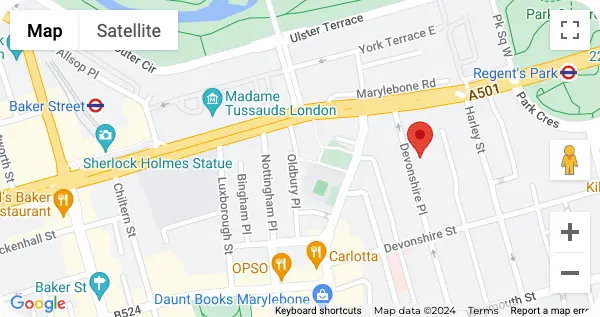Quick Reference: Ozempic Dosing Schedule
- Weeks 1-4: 0.25 mg once per week.
- Week 5 Onwards: Increase to 0.5 mg once per week.
- Possible further increases: 1 mg or 2 mg based on medical advice.
- Click-based dosing: Use pen clicks for precise dose adjustments.
- Note: Always follow your doctor’s instructions.
What is Ozempic?
Ozempic (semaglutide) is a once-weekly injectable drug that was created to assist in the management of type 2 diabetes and decrease the chances of significant cardiac events such as heart attack or stroke. It is one of the drugs called a GLP-1 receptor agonist, which imitates the impact of the physiological hormone that controls the levels of sugar in blood, providing a delaying effect on the digestion process and decreasing the appetite.
Although it has mainly been authorised to be used in the control of glycaemia in diabetic people, Ozempic has become a popular off-label prescription for weight loss medication for overweight or obese individuals. They prefer Ozempic as a weight-reduction tool to jump-start their weight-management journey.
Why is Ozempic Prescribed?
Ozempic is a type of medication that has gained popularity not only among individuals who have type 2 diabetes but also among individuals interested in finding a way to reduce weight and improve their heart’s health. It has an active component known as semaglutide, which acts on various pathways in the body; hence, it is a potent instrument in modern treatments. But what is it about Ozempic that is worthwhile prescribing? Let’s take a closer look at why Ozempic is prescribed by healthcare providers:
Treatment for type 2 diabetes
Doctors are prescribing Ozempic to patients with type 2 diabetes because it can help control their blood sugar levels by promoting insulin secretion, inhibiting glucagon (a sugar-increasing hormone), and retarding the rate of gastric emptying to avoid the sudden increase of glucose in the blood after taking a meal.
Supporting Weight Loss
Individuals who are taking Ozempic are able to experience a decrease in appetite and the sensation of satiety. In this case, it can lead to clinically significant weight loss. Although the semaglutide form, with the trade name Wegovy, has been officially recommended as a weight management drug, many others are subjected to off-label use of Ozempic due to its similar efficacy.
Reducing Cardiovascular Risks
Ozempic has shown cardioprotective effects in adult patients with type 2 diabetes and heart disease; this assists in alleviating their risk of heart attack and stroke.
Overview of Ozempic Dosage Chart
Ozempic uses a dose escalation strategy in order to maximise outcomes and minimise side effects. This is because the slow introduction of the dosage gives the body time to adjust, especially to its consequences on the digestive system.
Standard dosing schedule
| Week | Dosage | Purpose |
| 1-4 | 0.25 mg | Initial transition period to enable body adjustments. |
| 5+ | 0.5 mg | Maintenance dose for most patients. |
| If needed | 1 mg | For individuals who are unable to achieve their blood sugar and weight goals. |
| Max | 2 mg | Type 2 diabetes highest approved dose. |
Your healthcare provider may recommend that you start taking the drugs at a low dosage to minimise the chances of frequent gastrointestinal side effects like nausea, bloating, constipation, and diarrhoea, which usually manifest as the body adapts to semaglutide. Slow titration will enable the patients to tolerate the medicine better and adhere well to their treatment, which is crucial in long-term control of blood sugar and weight control. The dosage chart is of help to both the clinicians and the patients as they ensure that every procedure taken in the process is safe, tolerable, and individualised to the reactions.
Your doctor can change the dosage according to your blood sugar levels, weight loss rate, and tolerance.
Ozempic Dosage Chart for Weight Loss
Although Ozempic (semaglutide) is mainly registered as an antidiabetic treatment, it is being prescribed off-label, particularly in the UK, in case Wegovy is not available. Weight management dosing occurs on the same titration as diabetes dosing, except that some clinicians can administer the doses according to the reaction and response of the patients.
| Week | Weekly Dose | Notes |
| 1-4 | 0.25 mg | An initial dose to minimise side effects. |
| 5-8 | 0.50 mg | Maintenance dose for most patients. |
| 9-12 | 1.0 mg | Typical clinical dose of weight loss. |
| 13+ | 2.0 mg (max) | Increased dose for added weight loss effect |
Patients typically start experiencing weight-related benefits in week 8 to 12, and the effectiveness is increased by the use of diet and lifestyle modifications. However, not all patients are advanced to the level of 2.0 mg; it is determined by the tolerance of the medication and the extent of weight loss within the lower dose level.
Comparison with Wegovy Dosing
Although Wegovy and Ozempic are both based on semaglutide, Wegovy is used specifically to help with weight loss and has higher doses:
| Medication | Active Ingredient | Maximum
Weekly Dose |
Approved Use |
| Ozempic | Semaglutide | 2.0 mg | Type 2 diabetes (off-label for weight loss) |
| Wegovy | Semaglutide | 2.4 mg | Chronic weight management |
During clinical trials, Wegovy resulted in increased average weight reduction, as it has an enhanced dosage and significant structure programmes. However, Ozempic continues to have a good response when used off-label, usually leading to 5-15% total body weight loss over many months.
Ozempic Clicks Dosage Chart
Ozempic pens have a click format of dosing in which high accuracy can be used to titrate the medication, which is beneficial when changing dosages or if your medical professional prescribes a fractional dose.
Explanation of the pen click mechanism
The pen dial has a series of clicks, with each one signifying an increment of medication. The clicks that are needed will also differ based on your pen type (0.25 mg, 0.5 mg, 1 mg, and 2 mg).
Sample Clicks-to-Dosage Chart
| Dosage (mg) | Approximate Clicks |
| 0.25 mg | ~16 clicks |
| 0.5 mg | ~32 clicks |
| 1 mg | ~64 clicks |
| 2 mg | ~128 clicks |
Tips for accurate dosing using clicks
- Start at a lower dose to minimise the risks of side effects.
- Carefully count the clicks to prevent over-clicking.
- Double-check the pen before injecting.
- Store your pen properly.
- Avoid mixing the pens.
Always follow your pen’s instruction guide or speak with your healthcare provider for exact measurements.
Effective & professional doctor-led Ozempic at our central London clinic
Verified Before & After
Verified Before & After
Understanding Clicks vs. Traditional Dosage
Benefits of using clicks for personalised dosing
- Greater flexibility
- Improved tolerance
- Tailored approach
- Gradual titration
Situation where click-based dosing is advantageous
A click-based dosing can be useful when:
- Transitioning between dose levels
- Managing side effects
- Using Ozempic off-label for weight management
- Patients’ self-monitoring at home
Potential risks and the importance of medical guidance
Click-based dosing can be helpful, but it also comes with certain risks:
- Overdose or underdose risks: Inability to count the clicks or use an erroneous chart will result in wrong dosing.
- Non-standardisation: Click-to-dose equivalence varies among different pen types (e.g., 1 mg vs. 2 mg pens).
- Off-label usage issues: Unauthorised changes of dosages may affect the body in some unpredictable long-term ways.
Discuss the modification of your dose with your healthcare provider before making any changes by using the click. Medical supervision should take place when click-based dosing is performed, and you should accurately know the calibration of your pen as well as the course of treatment.
How to Use the Ozempic Pen
Ozempic must be administered correctly to be safe and effective. To ensure proper use, follow these steps:
Step-by-step instructions
Prepare the pen
- Wash your hands thoroughly
- Check the pen’s expiration date and its label
- Securely attach a new needle
Select the correct dose
- Turn the dial to the correct number of clicks.
- When in doubt, refer to the dosing chart or your healthcare provider.
Administer the injection
- Decide on your injection site (Abdomen, thigh, or upper arm – change sites each week).
- Rub the site with an alcohol swab to minimise the risk of infection (let it dry).
- Insert the needle and firmly press the button until the dose is fully delivered.
Dispose of the needles properly
- Remove and dispose of the needle in a sharp container.
- Store the pen in the fridge or at room temperature (up to 56 days after use)
Never lend your Ozempic pen to someone, even after it has been injected already with a different needle.
Dosage Adjustments and Consideration
Your dosage plans may be influenced by several factors:
- Patient’s response to treatment: Your doctor might need to raise the dose in case blood sugar does not go down or weight loss stops.
- Side effects experienced: The Occurrence of gastrointestinal side effects (e.g., nausea, diarrhoea, or bloating) frequently directs the rate of dose escalation.
- Presence of comorbid conditions: The ideal dose may change due to kidney or liver malfunction, risk of cardiovascular disease, or gastrointestinal disease.
Check-ins and blood tests every now and then will allow you to regulate your dose. Do not modify your dose on your own. Always consult your healthcare provider for any changes.
Common Mistakes with Ozempic Dosage
Mistakes can occur even if you have a detailed chart. Here’s what you need to avoid and why:
| Mistake | Risk |
| Skipping doses | Decrease the effectiveness and could interfere with blood sugar control. |
| Over-clicking the dial | May lead to accidental overdose |
| Not escalating the dose correctly | May delay treatment results and worsen side effects. |
| Using a pen incorrectly | May lead to the formation of air bubbles and incomplete delivery. |
| Ignoring side effects | May lead to serious complications. |
The patient may inform the doctor about abnormal symptoms as soon as possible.
Conclusions
The effective dosing of Ozempic can be done either through conventional measurements or the click-type dosing, but it is imperative that one knows how it functions so as to ensure maximum safety. Whether it is the learning of a mechanism of the pen or adhering to the right methods of injections and observing how your body reacts to them, all the processes are essential steps in your health experience.
The strict observation of the recommended dosing schedule not only contributes to the maximisation of the benefits of Ozempic but also decreases the chance of having side effects and complications. Anywhere that you are dealing with type 2 diabetes or using Ozempic to take weight off-label, consistency is the determining factor.
Lastly, never make adjustments to your dose without talking to your healthcare provider. Individual health advice guarantees that your treatment regimen will take into account your personal needs, medical conditions, and objectives.
The journey to wellness has been yours, and with the right support, each step closer means better results.
FAQs
- What is the starting dose of Ozempic?
A usual initial dose is 0.25 mg once per week during the first 4 weeks.
- How do I adjust my Ozempic dose using pen clicks?
Check your pen in the user manual or consult your medical practitioner. There are distinctive click-to-dose scales on each pen.
- Can I use Ozempic for weight loss?
Ozempic does not have an actual approval that may imply assisting with weight loss; the prescriptions of this drug for weight management are frequently used off-label under the guidance of a healthcare provider.
- Can the dosage of Ozempic be increased?
Yes, your healthcare provider can increase your dose to 0.5 mg, 1 mg, or 2 mg, depending on your body tolerance and goals.
- What’s the maximum Ozempic dose?
The maximum dose of Ozempic for diabetes is 2 mg.
- Are there side effects to increasing the dose?
Yes, the usual side effects are nausea, diarrhoea, constipation, and loss of appetite, most especially during titration.
Reserve an ozempic appointment
One of our experts will be more than happy to answer any questions you have.
Book AppointmentKatia T
★★★★★
Excellent service
12th December 2025
Claudia Baillie
★★★★★
Excellent service. Would recommend
12th December 2025
Christina Kotsamidis-ventouras
★★★★★
I had a wonderful experience - very thorough and painless. Highly recommend!
10th December 2025












